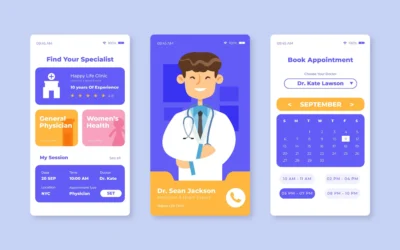The medical industry is becoming increasingly competitive online, and staying visible in search results is no longer just an option—it’s a necessity. With 2025 offering new opportunities and challenges for SEO, healthcare providers must adapt to the evolving trends to capture patient attention and enhance visibility. Let’s explore the key SEO trends shaping medical websites in 2025 and how to leverage them effectively to stay ahead of the competition.
1. E-A-T (Expertise, Authority, Trustworthiness) Remains Paramount
Google continues to emphasize E-A-T, especially for “Your Money or Your Life” (YMYL) pages such as medical websites. Patients seeking health advice need reliable, credible sources, and Google is doing everything to ensure these are the sites ranking at the top. In 2025, medical websites must invest in high-quality content created by certified professionals (e.g., doctors), showcase author credentials, and secure backlinks from reputable medical organizations to build authority.
Action Tip:
Regularly update your website with fresh, accurate health information and highlight your team’s expertise. Include bios, certifications, and links to studies or recognized resources.
2. AI-Powered Search Optimization
Artificial intelligence continues to revolutionize how users interact with search engines. Tools like Bard, ChatGPT, and Google’s AI-powered BERT algorithm are training users to ask conversational, question-based queries. For medical websites, this means optimizing content for long-tail keywords that align with patient concerns, such as “how to treat lower back pain safely.”
Action Tip:
Utilize AI-powered keyword research tools to predict potential questions your audience is asking. Focus on natural language and create FAQ pages tailored to patient queries.
3. Local SEO for “Near Me” Searches
The rise of localized searches in 2025, combined with increasing demand for nearby healthcare facilities, makes local SEO essential for medical practices. Patients are using “near me” searches to find doctors, clinics, and hospitals, with most users favoring the first few results on Google Maps.
Action Tip:
Claim and optimize your Google Business Profile. Ensure accurate NAP (Name, Address, Phone) details, include reviews, upload professional images, and use location-specific keywords like “best dermatologist in [city].”
4. Voice Search Optimization
Voice search is becoming a dominant force, especially for patients using mobile devices or smart speakers to rapidly find medical information. In 2025, voice search queries are typically longer and more conversational, such as “What’s the best treatment for migraines?”
Action Tip:
Adopt a conversational tone in your content and focus on answering questions directly, with concise, structured responses. Use schema markup to increase the chances of being featured in voice search results.
5. Mobile-First and Core Web Vitals Priority
Mobile-friendly medical websites are no longer optional—they are the standard. Google’s mobile-first indexing and its focus on Core Web Vitals (loading speed, interactivity, visual stability) have made usability a ranking factor. Medical websites in 2025 must ensure lightning-fast loading times and seamless navigation.
Action Tip:
Invest in responsive web design, improve image optimization, and regularly test your website’s performance on mobile devices using tools like Google PageSpeed Insights.
Conclusion:
In 2025, mastering SEO for medical websites goes beyond traditional tactics. Success lies in embracing AI, prioritizing local SEO, optimizing for voice search, and adhering to Google’s E-A-T guidelines. By focusing on these trends, healthcare providers can enhance their online visibility, build patient trust, and ultimately grow their practice.















